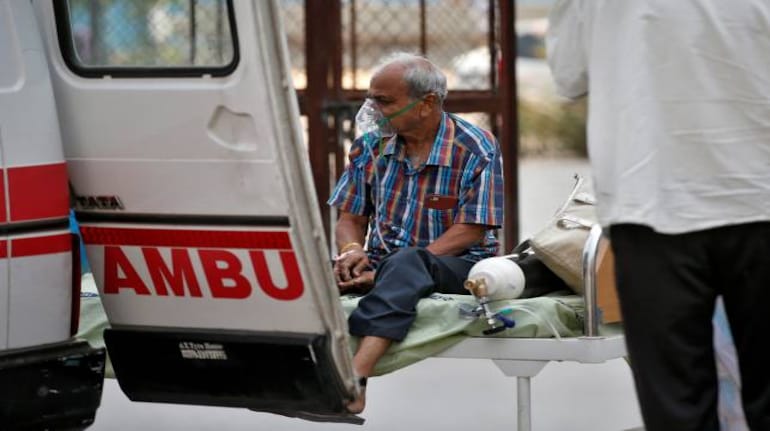



At a Health Ministry briefing on April 19 to discuss the COVID-19 situation of the country, the Director-General of the Indian Council of Medical Research (ICMR) has said that oxygen utilisation in the second wave of the pandemic is higher than the first wave.
ICMR head Dr Balram Bhargava explained that oxygen utilisation is more now because there has been a sudden and sharp surge in the number of fresh coronavirus infections being added in the second wave.
He said: "It could be explained by sudden surge in COVID-19 cases, creating panic among people who wanted to get admitted to hospitals and thus oxygen requirement shot up. But this is limited data from hospital setting and more will have to be looked at."
The ICMR chief added: "In the second wave, oxygen utilisation has been found to be 54.5 percent versus 41.1 percent earlier, while requirement of mechanical ventilation is 27 percent versus 37 percent before. Ventilator requirement is much less yet oxygen requirement is higher."
Commenting on the anti-viral drug Remdesivir, which is being rampantly blackmarketed after witnessing a spike in demand following rise in COVID-19 cases, Dr Randeep Guleria, Director, All India Institute of Medical Sciences (AIIMS), said: "Remdisivir is not a magic bullet. It can't be given in home setting. It's not like other antibiotics; it's for patients admitted to hospital."
He added: "It is not a drug that decreases mortality. We may use it as we do not have an anti-viral drug. It is of no use if given early to asymptomatic individuals with mild symptoms. Also of no use, if given late.”
Dr Guleria then went on to clarify that other drugs being used in COVID-19 treatment, such Flavipiravir and Fabiflu Tocilizumab, and even plasma of recovered coronavirus patients have limited role to play in treating the disease.
He said: “Studies show plasma therapy has a limited role and is not of much use. Less than two percent of COVID-19 patients require Tocilizumab that is being used a lot these days. Majority of patients with mild symptoms/asymptomatic will improve with just symptomatic treatment.”
Meanwhile, NITI Aayog member VK Paul reiterated at the Health Ministry briefing the findings of a new study that suggest that COVID-19 is an airborne disease.
VK Paul said: “Airborne transmission is more prevalent than surface transmission. As for Remdesivir production, it had gone down but now from 26 lakh vials/month, it has been scaled up to 40 lakh vials/month while aiming for 76 lakh vials/month.”
He also junked reports that stated that more young people are getting infected by the novel coronavirus in the second wave of the pandemic.
Discover the latest Business News, Sensex, and Nifty updates. Obtain Personal Finance insights, tax queries, and expert opinions on Moneycontrol or download the Moneycontrol App to stay updated!
Find the best of Al News in one place, specially curated for you every weekend.
Stay on top of the latest tech trends and biggest startup news.